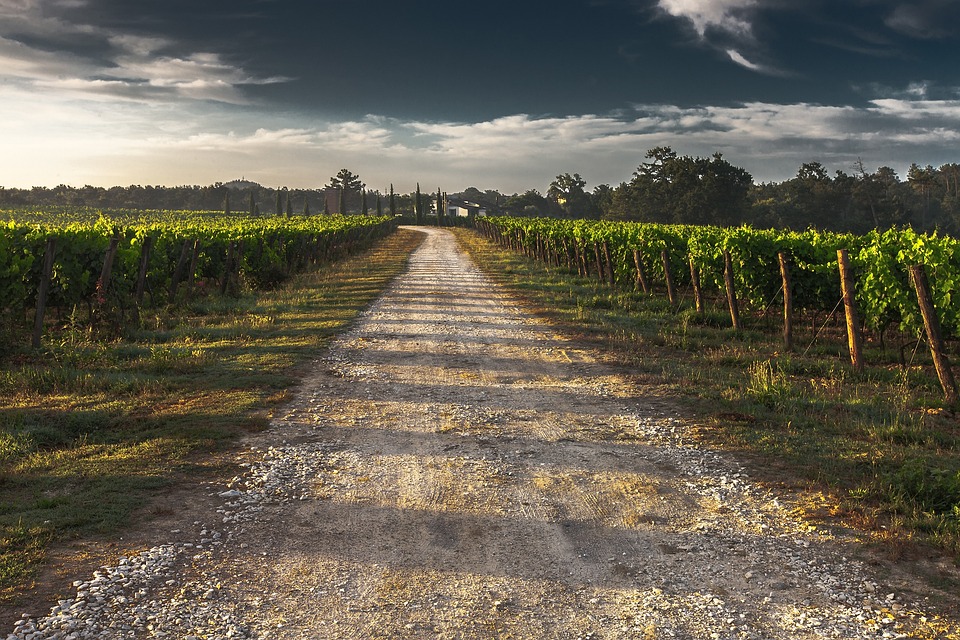# Sustainable Farming: A Solution for Food Security and Resilience
When you find yourself planting seeds under the golden sun, the world slows down. I remember the first time I put my hands in the soil, feeling the earth’s warmth and richness. A sprinkle of water, a dash of sunlight, and before I knew it, those tiny seeds transformed into vibrant vegetables that nourished my body and soul. Sustainable farming isn’t just about growing food; it’s about creating a relationship with the land and fostering food security for generations to come.
Sustainable farming is a transformative practice that gives us a glimpse into a resilient future. With global challenges like climate change, population growth, and dwindling resources, it feels more crucial than ever to rethink how we produce our food. Sustainable farming offers a path toward agriculture that not only meets the needs of today but also protects the resources required for tomorrow.
## Understanding Sustainable Farming
### What Is Sustainable Farming?
At its core, sustainable farming is the practice of growing food in a way that is both environmentally friendly and economically viable. It focuses on methods that maintain the health of the land while minimizing the carbon footprint and promoting biodiversity. Think of it as a symphony where every instrument plays harmoniously, creating a system that benefits the environment, communities, and farmers alike.
### Principles of Sustainable Farming
1. **Soil Health**: Healthy soil is the foundation of sustainable agriculture. Practices like crop rotation, cover cropping, and reduced tillage enhance soil structure and fertility, leading to more productive harvests.
2. **Biodiversity**: A diverse ecosystem supports various crops and wildlife, which naturally controls pests and diseases, reducing the need for chemical interventions.
3. **Water Management**: Sustainable farming practices prioritize efficient water usage, employing techniques like rainwater harvesting and drip irrigation to conserve this precious resource.
4. **Local Focus**: By prioritizing local markets and community connections, sustainable farms can reduce transportation emissions while ensuring the community has access to fresh, nutritious food.
5. **Renewable Resources**: Utilizing renewable resources like solar and wind energy helps lower carbon emissions and promotes energy independence.
6. **Waste Reduction**: Composting and recycling on the farm minimizes waste and enriches the soil, showcasing a zero-waste mindset.
## The Benefits of Sustainable Farming
### Food Security
As the global population continues to rise, food security becomes an increasing concern. Sustainable farming practices can significantly boost local food production, ensuring communities have access to fresh, nutritious food. By growing food closer to where it is consumed, we can reduce reliance on long supply chains that are vulnerable to disruptions.
### Economic Resilience
Sustainable farming practices are often more cost-effective in the long run. By relying on renewable resources and reducing the need for chemical inputs, farmers can decrease operational costs. Additionally, focusing on local markets allows farmers to diversify their income streams and build robust, resilient businesses.
### Climate Change Mitigation
Agricultural practices are significant contributors to greenhouse gas emissions. However, sustainable farming can mitigate these effects through practices like carbon sequestration. By enhancing the soil’s capacity to capture carbon, farmers can actively contribute to fighting climate change while improving soil health.
### Community Building
Sustainable farming often leads to stronger community ties. Farmers’ markets, community-supported agriculture (CSA) programs, and local food cooperatives foster connections between farmers and consumers. This sense of community creates trust and reinforces the importance of supporting local economies.
### Biodiversity Preservation
The emphasis on biodiversity in sustainable farming helps protect various plant and animal species. Crop diversity not only enriches the ecosystem but also contributes to better nutrition for consumers.
## Practical Tips for Sustainable Farming
If you’re excited to embrace sustainable practices, here are some pro tips to get you started:
1. **Start Small**: Change doesn’t happen overnight. Begin with a small garden plot or raised bed to experiment with sustainable practices. Focus on soil health and try out organic gardening methods.
2. **Utilize Native Plants**: Incorporate native plants into your garden. They require less water and are better suited to your local climate, making them easier to maintain.
3. **Compost**: Start composting kitchen scraps and yard waste. Compost enriches the soil and reduces the need for chemical fertilizers.
4. **Practice Crop Rotation**: This traditional method helps prevent soil depletion and the buildup of pests and diseases. Rotate different families of crops each season to keep the soil balanced.
5. **Integrate Livestock**: If space allows, consider adding chickens, goats, or bees. They can provide natural pest control, fertilizer, and additional income sources.
6. **Embrace Permaculture**: Look into permaculture principles, which work with nature rather than against it. Design your garden to create habitats, cycles, and regeneration.
7. **Educate Yourself and Others**: Attend workshops, read books, and connect with local farmers to constantly learn and share knowledge on sustainable practices.
## Sustainable Farming Methods
While the principles of sustainable farming guide its practice, specific methods can help farmers implement these ideals effectively:
### Organic Farming
This method emphasizes biodiversity, soil health, and the avoidance of synthetic inputs. Organic farmers utilize natural fertilizers, crop rotations, and pest control strategies like companion planting to maintain healthy ecosystems.
### Agroecology
Agroecology combines traditional agricultural practices with modern science to create systems that work in harmony with nature. It assesses the entire farming ecosystem and aims for food production that is economic, ecological, and socially responsible.
### Holistic Management
This approach considers the entire farming ecosystem—soil, plants, animals, and even local communities. By managing these interconnected components holistically, farmers can ensure sustainable outcomes for both the land and their livelihood.
### Permaculture
Permaculture is rooted in sustainable land-use design. It emphasizes observing natural ecosystems to create agricultural systems modeled after nature’s interactions. By planting perennial crops, utilizing swales for water retention, and creating closed-loop systems, permaculture offers a sustainable lifestyle.
### Regenerative Agriculture
Regenerative agriculture goes beyond sustainability by actively improving and restoring soil health and ecosystems. This method focuses on practices like cover cropping, no-till farming, and agroforestry to regenerate the land.
## Overcoming Challenges
While sustainable farming presents numerous benefits, it also comes with challenges. Market access, initial costs of transitioning, and a lack of knowledge can deter many farmers from adopting sustainable practices. However, education, support networks, and community resources can help overcome these barriers.
### Building a Support Network
Joining local agricultural organizations or cooperatives can provide valuable resources, connections, and knowledge that can help farmers transition. Sharing experiences and learning from those who have successfully implemented sustainable practices can empower new farmers.
### Accessing Resources
Seek grants and funding opportunities aimed at promoting sustainable practices. Many agricultural organizations and government agencies provide financial support for farmers willing to adopt ecological farming methods.
### Knowledge is Power
Education is vital in overcoming obstacles. Attend workshops, enroll in online courses, and find mentors who can offer guidance on sustainable farming practices.
## Looking Ahead: The Future of Sustainable Farming
Sustainable farming has the potential to shape a future where food security becomes a reality for all. By embracing innovative practices and adapting to changing circumstances, we can nurture the soil, support local economies, and combat climate change.
Imagine a world where every community can grow its own food, rich in flavor and nutrients and cultivated with respect for nature. That vision starts with each of us—whether we have a backyard garden, a balcony filled with pots, or access to a local farmers’ market.
## Conclusion
Sustainable farming symbolizes more than just a method of food production; it embodies a lifestyle characterized by connection, responsibility, and hope. With each seed we plant and every sustainable practice we adopt, we contribute to a better world for ourselves and future generations. As we dig our hands into the soil, let’s also dig into practices that promote resilience and security for the food systems of tomorrow.
Through education, community engagement, and commitment to sustainability, we can not only sustain our land but also cultivate lasting change. Join the movement, and see how a simple act of planting can sow the seeds of a more resilient future!



